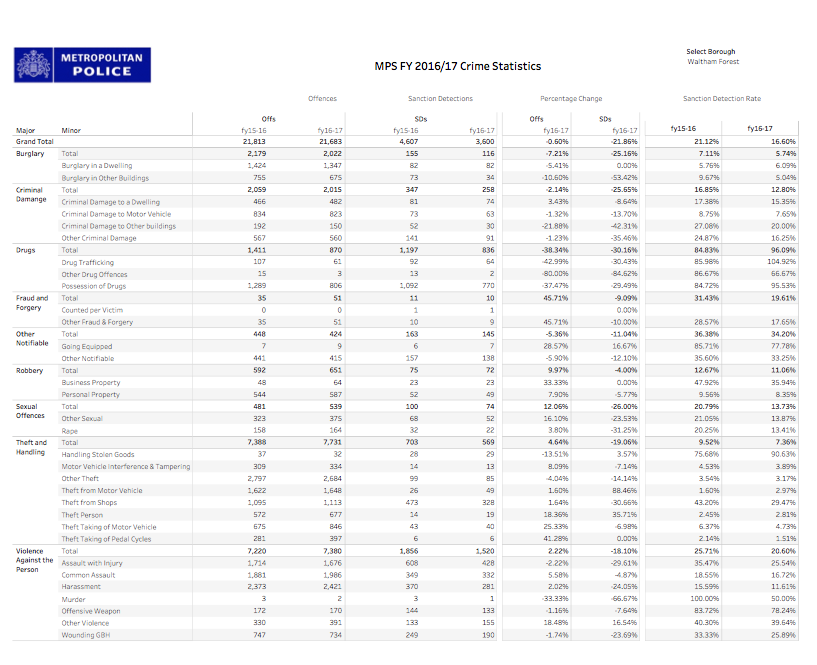Policing in Waltham Forest: performance
This post turns from its predecessor’s focus on police priorities to police performance.
For reasons that are unclear, the most up to date figures borough by borough on number of offences and related sanction detection rates (SDRs) are no longer widely circulated, but some careful searching has unearthed the table appended below.
The series therein largely speak for themselves, and paint a rather uninspiring picture.
In fact, focusing on the 41 Waltham Forest SDRs for 2016-17 (the extreme right hand column), 34, or 83 per cent, are worse than in the preceding year.
And placing Waltham Forest in a relative perspective only marginally modifies the overall impression. Again focusing on the 2016-17 SDRs, while 22 are better than their Metropolitan Police Force equivalents, 19 or 46 per cent are not.
All told this is an unsatisfactory situation, and one that, as previously suggested, merits some sober inquiry.
Self-evidently, SDRs are shaped by several different factors – to name but a few, the incidence and character of local crime; the number of police in the borough, their collective capabilities and experience, the efficiency with which they are deployed, and the quantity and quality of the intelligence at their finger tips; and the performance of the wider criminal justice system, particularly the Crown Prosecution Service.
There are no easy answers, but it is also true that without sustained analysis, based upon real evidence rather than unsupported assertion, little is likely to improve.
We can only hope that, having ignored SDRs for so long, the likes of the LBWF Communities Scrutiny Committee and the Waltham Forest Safer Neighbourhoods Board will now begin to take them seriously.
If they want a starting point to mull over, the one that stands out is the Borough Commanders admission to the Communities Scrutiny Committee of September 2016 that ‘There are 12-14 pieces of police intelligence confirmed in the Borough per day which is one of the lowest rates in London’.

